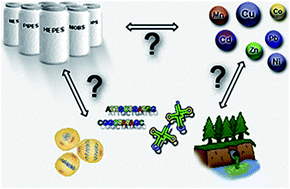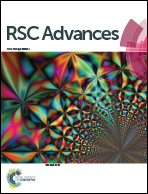(Un)suitability of the use of pH buffers in biological, biochemical and environmental studies and their interaction with metal ions – a review†
Abstract
The use of buffers to maintain the pH within a desired range is a very common practice in chemical, biochemical and biological studies. Among them, zwitterionic N-substituted aminosulfonic acids, usually known as Good’s buffers, although widely used, can complex metals and interact with biological systems. The present work reviews, discusses and updates the metal complexation characteristics of thirty one commercially available buffers. In addition, their impact on biological systems is also presented. The influences of these buffers on the results obtained in biological, biochemical and environmental studies, with special focus on their interaction with metal ions, are highlighted and critically reviewed. Using chemical speciation simulations, based on the current knowledge of the metal–buffer stability constants, a proposal of the most adequate buffer to employ for a given metal ion is presented.


 Please wait while we load your content...
Please wait while we load your content...